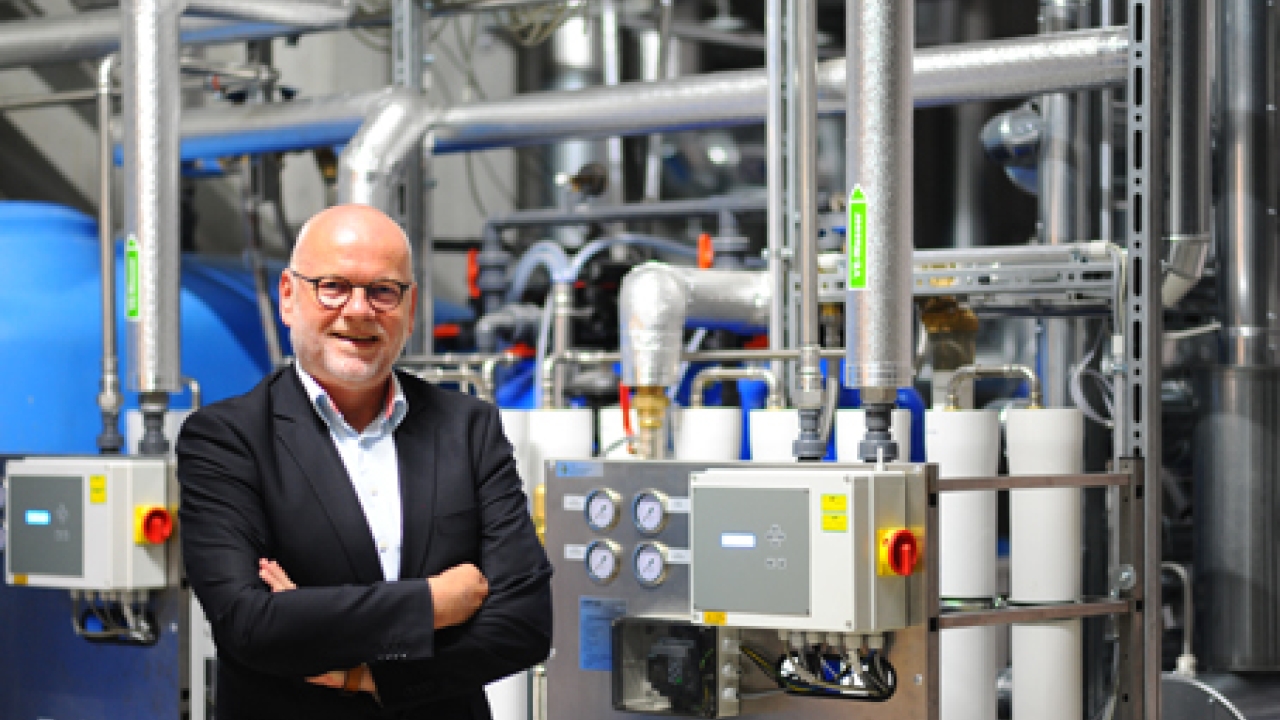Herma invests in energy efficiency at new coating plant
Herma has invested in a combined cooling, heat and power plant at its new self adhesive material coating facility. The project is one of the measures that will significantly reduce the plant’s energy demand.

By generating its own electricity, cooling energy and heat in the process, saving as much energy as would normally be used by around 150 homes, the self-adhesive solutions specialist Herma will be opening a new chapter in energy terms when it commissions its new coating plant for adhesive materials in Filderstadt this autumn. As well as benefitting the environment, the underlying reasons also have a strong business motivation.
‘In five to 10 years’ time, the relevance of energy costs will be very different from today,’ said Herma managing director Dr. Thomas Baumgärtner, who also heads up the self-adhesive materials division.
He added: ‘the ability to use energy very efficiently will sooner or later become a very valuable competitive edge.’ W
With this in mind, and right at the beginning of planning work on the plant, Herma had brought in energy experts from EGS-plan in Stuttgart. The designers from the engineering consultancy, which has already garnered numerous prizes and awards for its concepts aimed at sustainability, were given more or less a free hand.
‘This is by no means a given,’ said Uwe Hemminger, head of the energy concepts department at EGS-plan and someone who has already overseen a large number of projects. ‘When a manufacturing company builds a new production facility, in the majority of cases it sticks to the energy concept of the existing plant because that has been tried and tested; the focus is generally on the actual production processes. When it comes to the energy supply, people prefer to leave well alone. However, Herma was prepared to try something new, provided it paid dividends.’
At the heart of the Herma concept is the company’s own cogeneration plant with combined cooling, heat and power; the heat that arises almost as a by-product of power generation is in turn used by absorption chillers to cool machinery and production halls.
‘The volume of heat and cooling energy we generate is even enough additionally to provide heating and air-conditioning for the new building belonging to Herma’s labeling machines division that we commissioned in January on the same site,’ Baumgärtner said.
In this connection the principle of concrete core activation is applied: plastic pipes that were embedded in the solid concrete ceilings of the labelling machine building carry either hot or cold water, depending on the time of year. ‘This allows the room temperature to be regulated in a way that is very energy-efficient and environmentally sound.’
Furthermore, with a special layered ventilation system, considerably less supply air needs to be heated or cooled in the new adhesive materials plant – generating a saving in the order of 50,000 cubic metres of air per hour.
‘And the process of conditioning air is particularly energy-intensive,’ notes Hemminger from EGS-plan.
The steam required to dampen the paper webs is no longer generated – as in the existing plant – at a single, central point, but has been decentralised to be close to the production machines, making the supply more needs-based and reducing the energy lost in transit.
These and other measures together enable substantial savings to be made. Compared to the energy concept of the coating plant that Herma commissioned in 2008, the company is now saving a quantity of electricity that is roughly equivalent to the annual consumption of 200 homes, while in the case of heat, the reduction is on a par with the annual uptake of around 100 dwellings.
‘We are very much looking forward soon to be operating a coating plant that is absolutely the best in terms not only of its production and material flow technology, but also of its energy efficiency,’ Dr. Baumgärtner said.
The plant is due to be commissioned this coming autumn; the amount invested in the new coating plant is in excess of 80 million euros.
Stay up to date
Subscribe to the free Label News newsletter and receive the latest content every week. We'll never share your email address.

